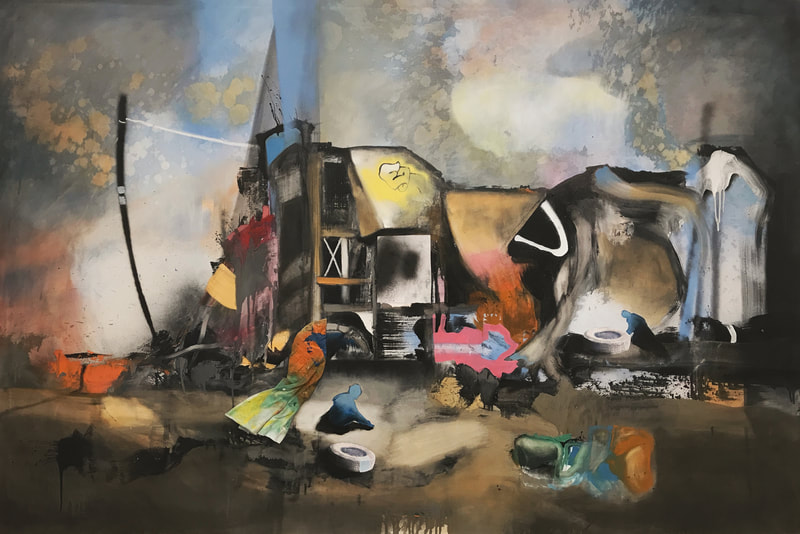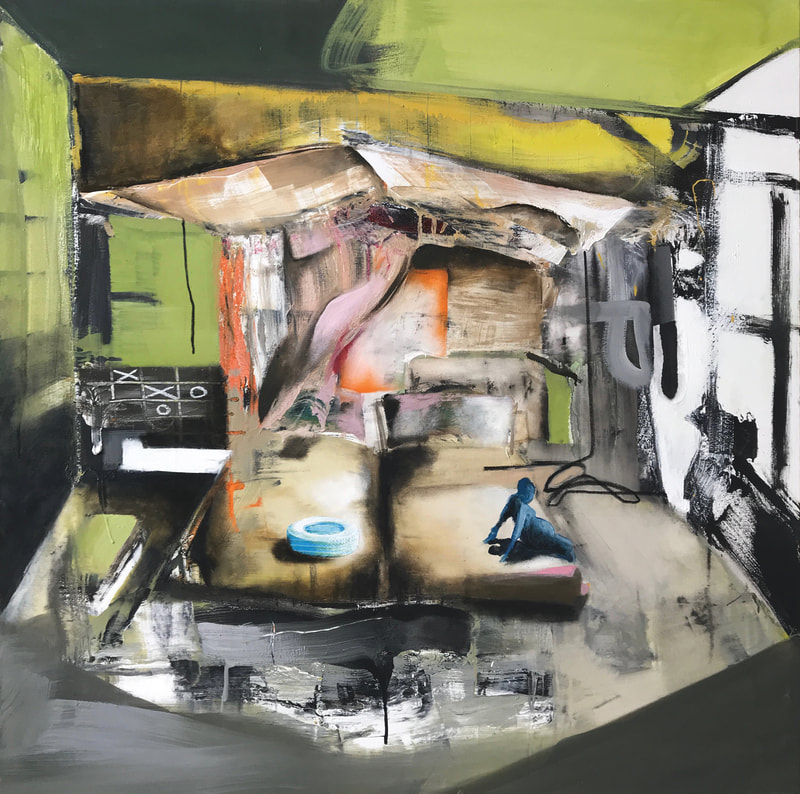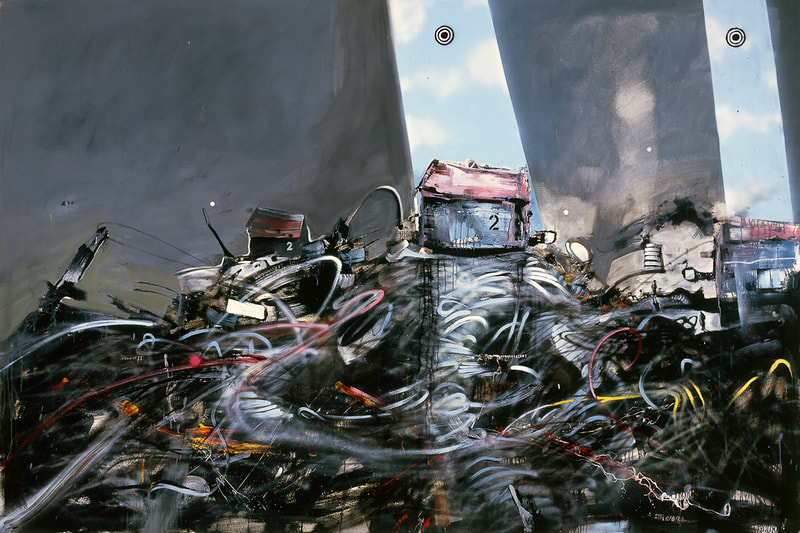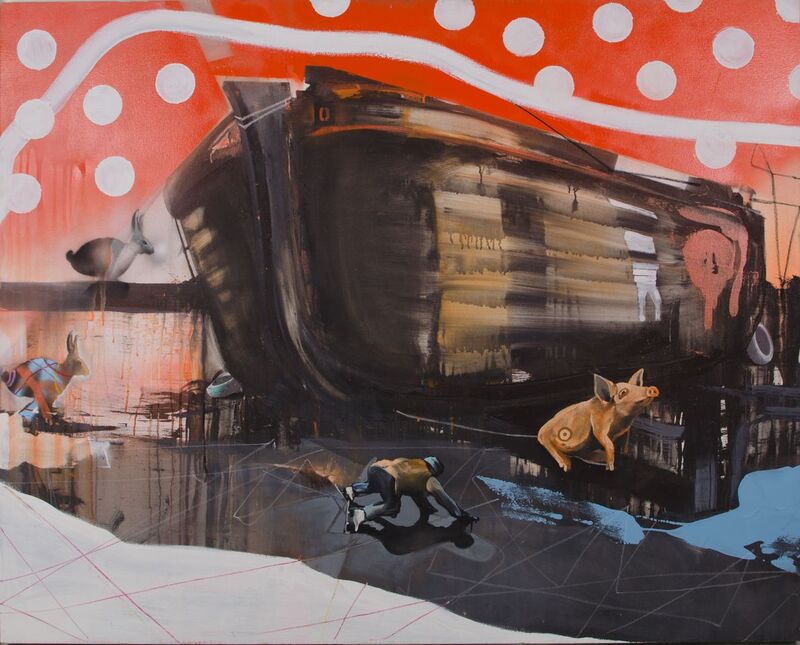Tub, 2002
LANDSCAPE SERIES
1996 - 2023
1996 - 2023
|
By Dieter Ronte
(Former director and Art Historian at Kunst Museum Bonn, Germany), 2018 Marcus Jansen was discovered by one of the major connoisseurs of Abstract Expressionism in America. Jerome A. Donson, director of traveling exhibitions at New York's Museum of Modern Art, compared Janses art to that of the socio-critical Ashcan School, and hailed him as the innovator of a modern expressionism (See Modern Urban Expressionism; The Art of Marcus Antonius Jansen, 2006). Pointing to the Ashcan School, founded in New York in 1904 by painters from Philadelphia such as Maurice Prendergast, Donson highlighted the social criticism in Jansens work and with the term Expressionism he referred to the distinctive abstract components of his paintings and installations. Abstract Expressionism was neither a style nor the result of a manifesto; it was rather the consensus of modern artistic approach in America after 1945, characterized by the fact that painting had abandoned representation in favor of a purely abstract picture making, as seen for example in the work of Jackson Pollock, Franz Kline, Mark Rothko, Willem de Kooning, and many others. Their ai was to created works of art, without imagery and without any influence from the outside world, dealt both with the painting as painting and with the momentary emotional or intellectual of the given painter. In Marcus Jansens “Urban expressionism” the canvas as painted abstraction is also the support for pictorial information from the external world. The canvas becomes the promulgator of urban social, surreal visions of the world. It takes up the reality of the artist's worlds: it formulates a critical artistic approach. As his artistic idiom Jansen has created a personal pictorial alphabet that repeatedly appears in his various paintings or installations: for example, a pig, an automobile tire, a toadstool, a few isolated figures, the artist himself, and the American flag, supplemented by the formal placement of numbers or letters, The alphabet of objects is the continuation of abstraction, and at the same time heightening and unleashing of abstraction. The automobile tire , which can also be replaced by a life preserver, refers to trash, disposal, safety, speed, travels, dangers, technology-without any need for the artist to worry about rolling resistance of efficiency-risk, blowouts, transpiration, provisions, and many other aspects of everyday life, At the same time it is a reference to a famous 1961 installation by Allan Kaprow (1927-2006) in the back courtyard of a New York gallery, titled Yard or to a famous combine painting by Robert Rauschenberg (1927-2006) in the Moderna Museet in Stockholm, Monogram (1955-59), in which a goat stands in an automobile tire on a painted wood base. The tire becomes a metaphor for the for the life Jansen so critically questions in his invented post-apocalyptic scenes. Jansen insists on the freedom of being subjective, to breach the social expectation of a fixed cannon. The objects experience the freedom of subjectivity in the work of art so that abstraction breaks into realism and realty, n turn becomes abstract. |
By DeWitt Cheng
(Artillery Magazine). 2018 In the late 1940s, Abstract Expressionism developed as an aesthetically pure style, stripped of the political content of 1930s Depression-era art, memorably dismissed by Arshile Gorky as “Poor art for poor people.” That attitude persisted until a counter-reaction set in a generation later, launching conceptual and postmodern art, informed by a progressive, critical viewpoint. Those of us who agreed with the politics also, unfortunately, had to concede that decoding the sometimes convoluted intellectual puzzles was like taking medicine, and not user-friendly enough for the “masses.” Combining sociopolitical content with visual pizazz, however, can be done. John Heartfield’s anti-Nazi photomontages; Anselm Kiefer’s mythic war-torn landscapes; the anti-imperialist paintings of Manuel Ocampo; Käthe Kollwitz’s powerful prints about class oppression and struggle; and Sue Coe’s scathing eviscerations of the industrial slaughter of animals are all passionate and compassionate. Marcus Jansen belongs to this humane, humanist tradition. The title of Jansen’s show, “Obscure Line Between Fact and Fiction,” evokes our current cultural pathology of “fake news” and “alt facts.” Jansen, born in New York to a German father and an American mother, and growing up in 1960s-1970s Germany, would have had an outsider’s perspective on American history even had he not enlisted in the military for Desert Storm in 1989. After seeing combat and leaving the military after a PTSD diagnosis, Jansen trained in commercial painting in Germany, and began his fine-art career in 1990. Influenced by the freedom, ambition and scale of Abstract Expressionist painting, and convinced that painting was still viable and relevant even as its death was announced by evangelizers who unconsciously imitated the postwar partisans of AbEx, Jansen wrote, later: “I wanted to prove that Painting was not dead.” Mission accomplished. Jansen employs abstraction to explore psychic chaos and conflict, in traditional AbEx style, but in his hands, improvisation opens the valves of feeling (to paraphrase Francis Bacon) and experience; he re-enacts or works through (his words) memories of war in the arena of the canvas, creating enthralling panoramas that pit the terrible beauty of destruction against our conflicting moral sentiments. Pictorial space is inconsistent or ambiguous, as in a dream (or in a damaged building near collapse). Tiny figures wander through the detritus, like the tourists and gypsies in paintings of classical or Gothic ruins by Hubert Robert and Caspar David Friedrich.
Jansen, however, never lapses into melancholic musing; the inclusion of incongruous elements (car tires, pigs, toadstools, soccer balls, numbers and letters, flags) that one might find half-buried in any contemporary disaster scene—from our media smorgasbord of war, famine, pandemic, fire, flood, landslide, hurricane, and drought—lends urgency and contemporaneity to his visions. The shadowy survivors picking through the ruins—soldiers, drawn from memory, as well as figures taken from photographs and paintings—are tragic figures, like Goya’s survivors and victims, but rendered without hyperbole, and all the more affecting for that reserve. While Jansen’s large, epic, contemporary history paintings are dazzling tours de force, his smaller canvases are more personal and less rhetorical, and frequently reminiscent of Francis Bacon and Llyn Foulkes. Jansen might be reviving the moral ethos of 1930s painting for our troubled times. |





























